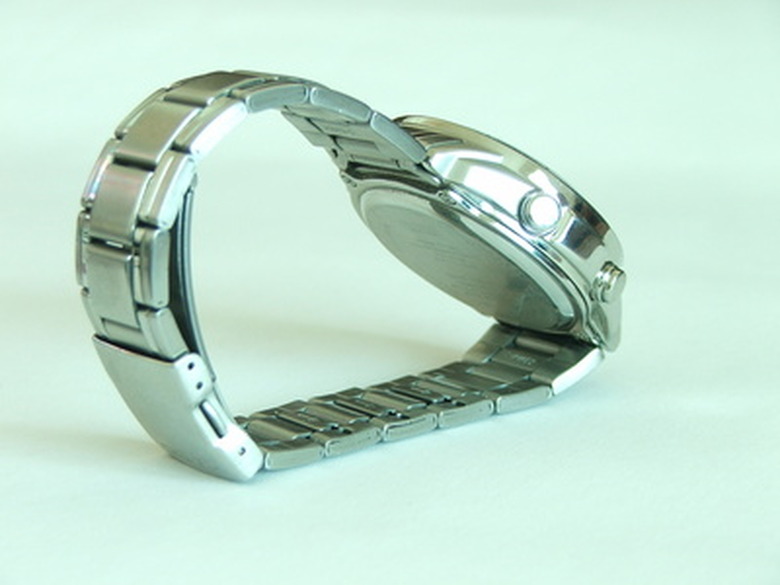How To Use A Bezel Slide Rule
Many pilot's watches made make use of a circular slide rule on the bezel of the watch. These were used by pilots to do simple arithmetic, conversions and other calculations in an era before GPS and calculators. Old pilot's watches feature these slide rules, and any newer pilot-style watches also have this feature to give the watch a traditional look. Slide rules may seem a bit old-school now, but they still perform mathematical calculations just as well as they did in the past.
How to do Conversions Using the Bezel Slide Rule
Step 1
Look for the starting units of the measurement you would like to convert on the bezel on the watch. This should be on the interior stationary dial of the watch.
Step 2
Move the rotating part of the slide rule to line up the amount to be converted with the units marker on the inside of the dial. If you were looking to convert 90 nautical miles to kilometers you would line up 90 on the outer dial with the naut. or nautical miles indicator on the inside dial.
Step 3
Look for the units marker for the unit you are converting to and read the measurement there. This is the conversion. If you are converting 90 nautical miles to kilometers, once lined up the kilometers marker will be at 16.6, you need to move the decimal to the right one. This is based on the knowledge that nautical miles are larger than kilometers. You know it cannot be 16.6, so you move the decimal to the right to get the correct answer of 166. You will need to move this decimal for all calculations.
How to do Division Using the Bezel Slide Rule
Step 1
Adjust the decimals of the number you are dividing and the number you are dividing it by, so that they are both numbers on your slide rule. This usually means (although it may vary with different models) numbers between 1 and 30. For example 300 would become 30, and 90 would become 9.
Step 2
Line these two modified numbers up, with the number you are dividing on the outside ring and the number you are dividing by on the inside ring.
Step 3
Read the number on the outer ring where it lines up with the origin on the inner ring. This is usually at 10. This is your result, although you may have to adjust the decimal using a estimation of the outcome. If you divide 200 (20 on the outer ring) by 50 on the inner ring, your result will be 40. 40 is much too large so you adjust the decimal to give you the correct answer of 4.
How to do Multiplication Using the Bezel Slide Rule
Step 1
Rotate the number (adjusting the decimal) that you would like to multiply on the outer ring to the origin, usually 10, on the inner ring.
Step 2
Look for the other number you would like to multiply by (adjusting the decimal) on the inner ring.
Step 3
Read the number on the outer ring opposite the number you are multiplying by (Step 2). This is your result, adjusting the decimal.
Cite This Article
MLA
Dick, Daniel. "How To Use A Bezel Slide Rule" sciencing.com, https://www.sciencing.com/use-bezel-slide-rule-6464232/. 24 April 2017.
APA
Dick, Daniel. (2017, April 24). How To Use A Bezel Slide Rule. sciencing.com. Retrieved from https://www.sciencing.com/use-bezel-slide-rule-6464232/
Chicago
Dick, Daniel. How To Use A Bezel Slide Rule last modified August 30, 2022. https://www.sciencing.com/use-bezel-slide-rule-6464232/
